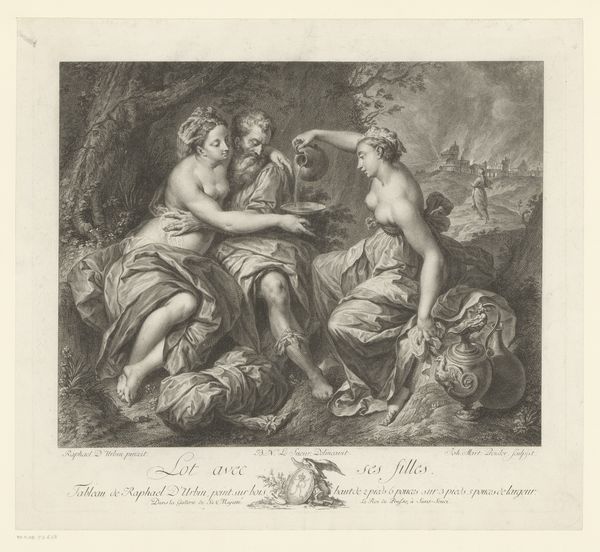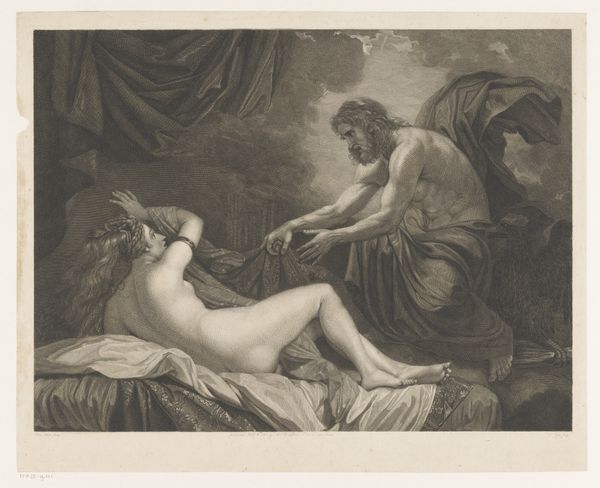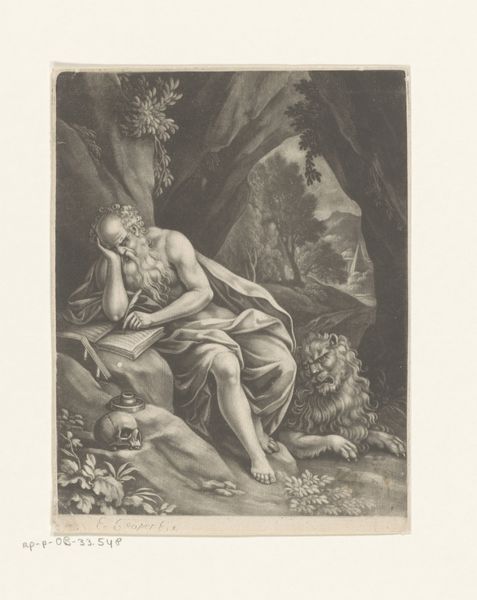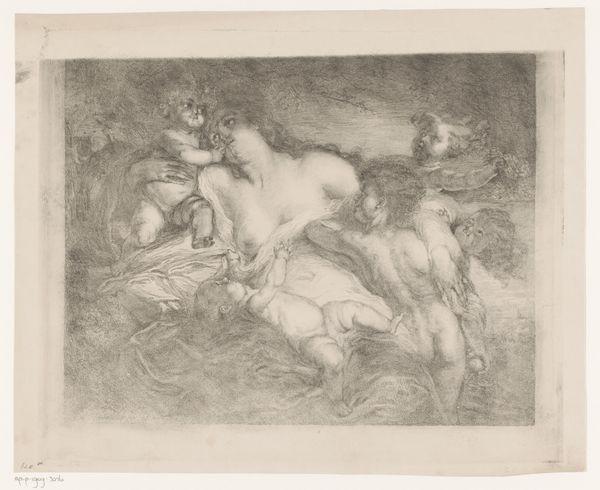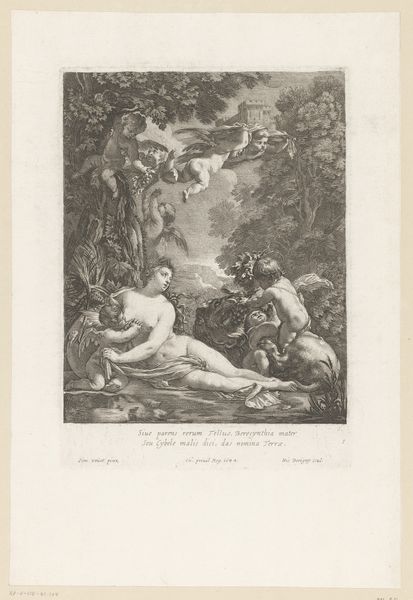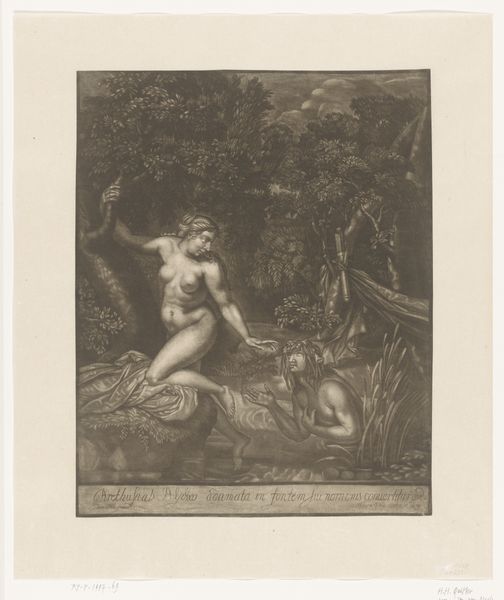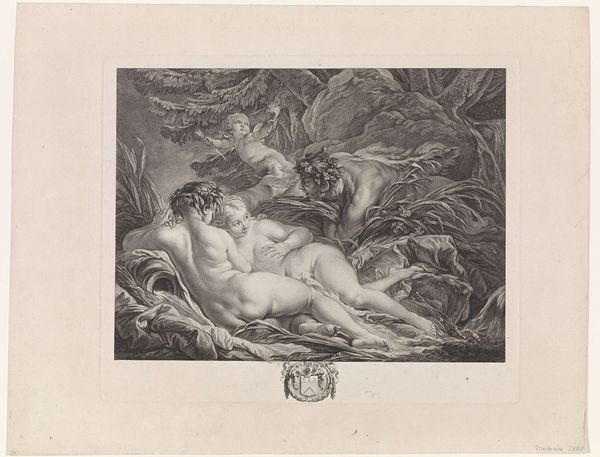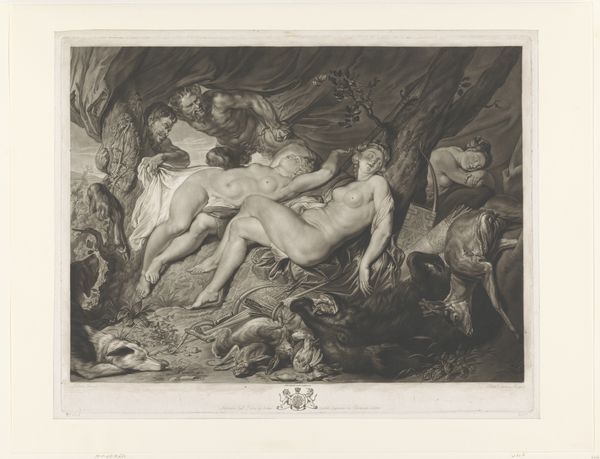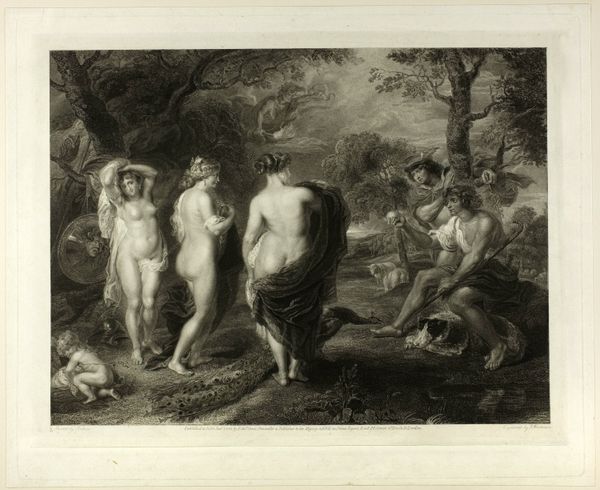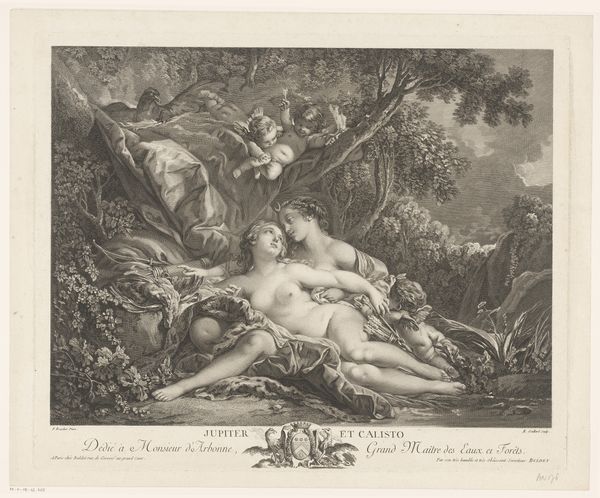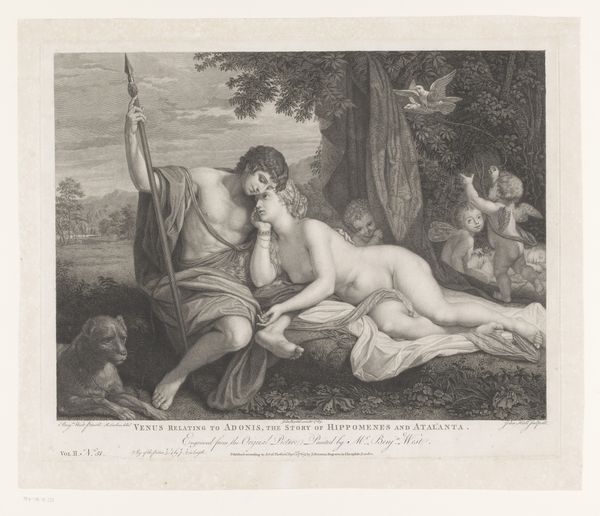
Dimensions: Sheet: 15 11/16 x 15 13/16 in. (39.8 x 40.2 cm) Plate: 12 15/16 x 21 5/8 in. (32.8 x 55 cm)
Copyright: Public Domain
Curator: Let's turn our attention to this engraving, "Diana Leaving the Bath," crafted in 1864 after Franois Boucher’s composition, offering a glimpse into the tastes of the period. Editor: The first thing that strikes me is how posed and idealized these figures of Diana and her attendant are; almost like a tableau vivant. The hounds and dead game further highlight this feeling that we are gazing into a performance. Curator: Precisely! Boucher's art often reflected the preferences of the French court, prioritizing elegant eroticism and mythological narratives. Edmond Hédouin, who created this print, was skillful in translating Boucher's signature style, bringing it to a broader audience via prints like this. We can think of these images in terms of commodity and taste during the 19th century. Editor: It makes me wonder about the original intended audience. Was it truly about high art appreciation or more about private pleasure, reinforcing dominant cultural norms around idealized female beauty? Curator: Definitely something to consider! We should also examine the engraving technique. Hédouin masterfully recreates Boucher's painterly effects—notice the delicate lines creating texture and shading on skin and fabric. The market for reproductive prints drove technical refinement during this period. Editor: The slain animals at Diana's feet give me pause. There's something troubling about coupling female nudity with a show of hunting prowess, which evokes complex issues around gender, power, and dominion over the natural world that remain urgent today. Curator: Those elements undeniably tie into 18th and 19th-century understandings of aristocratic identity and leisure, yes, the hunt was definitely part of that symbolic language. It really illustrates the interweaving of social position with cultural norms around both bodies and landscape. Editor: Thank you. Thinking through those aspects, it transforms how I perceive the work. Curator: Yes, there are endless things to consider here, and even with my historical perspectives, I realize the ever-changing nature of this interpretation is invaluable.
Comments
No comments
Be the first to comment and join the conversation on the ultimate creative platform.

